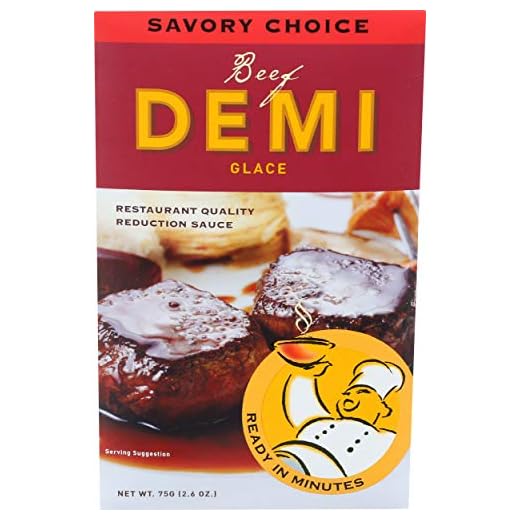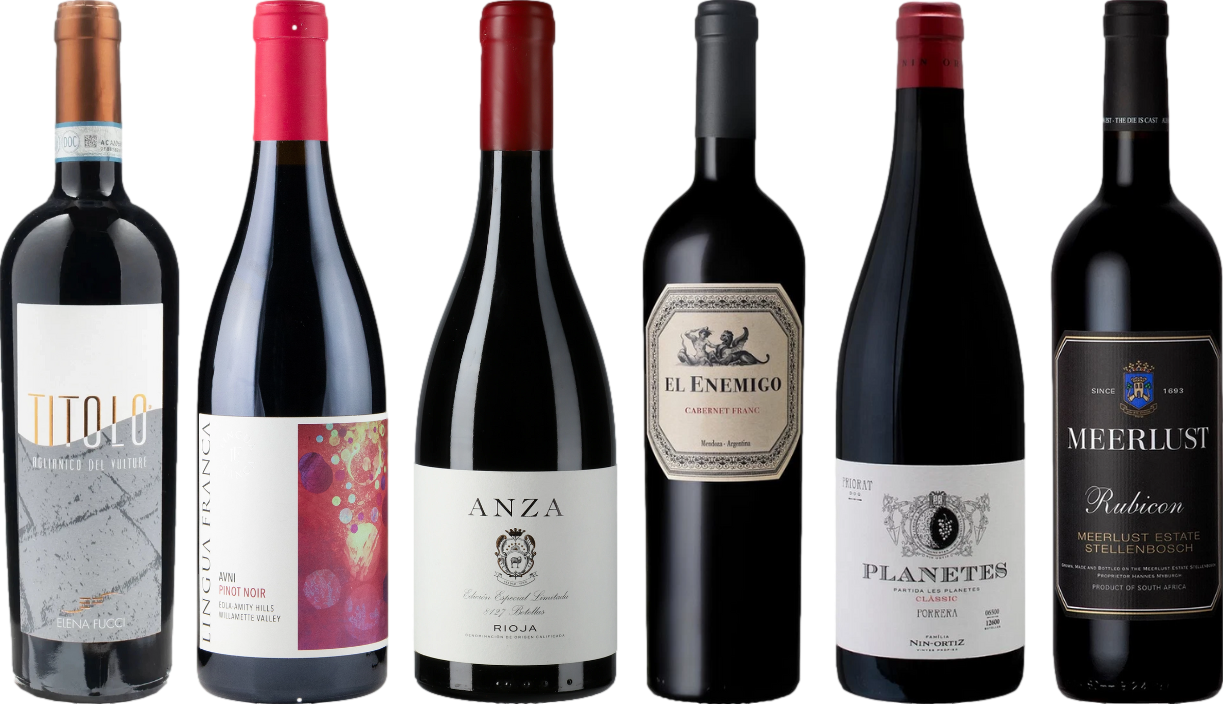



The first step involves selecting a robust grape-based liquid, ideally one with deep fruit notes and moderate tannins. Aim for a bottle that complements your dish, as the characteristics will intensify during cooking.
Begin by combining the liquid with finely chopped shallots and herbs such as thyme and bay leaves in a saucepan. Bring this mixture to a gentle simmer. As it reduces, the flavors will meld, creating a concentrated essence.
Continue cooking until the volume decreases significantly, usually by about two-thirds. This process not only thickens the texture but also amplifies the taste profile, resulting in a velvety sauce perfect for drizzling over meats or vegetables.
Finish with a touch of butter for richness, and a pinch of salt to balance the flavors. Strain the reduction through a fine mesh sieve to achieve a smooth consistency. The result should be a glossy, flavorful sauce that elevates any plate.
Crafting a Rich Sauce with Dark Liquor
Begin by selecting a quality dark liquor, which will serve as the foundation. Pour two cups into a saucepan and bring it to a gentle simmer. Allow it to reduce by half, concentrating the flavors. This step is crucial for achieving a robust taste.
Incorporating Aromatics
Add finely chopped shallots and garlic, approximately one cup combined, to the simmering liquor. Sauté until they soften, releasing their natural sweetness, about five minutes. Then, introduce a fresh herb bouquet with thyme and bay leaves to infuse additional aromas. Let this mixture simmer for another ten minutes.
Finishing Touches
Strain the mixture through a fine sieve to remove solids. Return the liquid to the saucepan and gradually whisk in a tablespoon of cold butter for richness, stirring until fully incorporated. Season with salt and pepper to taste. This sauce pairs excellently with a variety of meats, especially lamb. If you’re interested in preparing lamb, check out this guide on how to cook lamb shanks in air fryer.
Selecting the Right Red Wine for Demi Glace
Choose a medium to full-bodied variety with good acidity and moderate tannins. Look for options like Merlot or Cabernet Sauvignon; these provide depth and complexity without overwhelming the dish.
Regions such as Bordeaux or Napa Valley offer excellent choices. A Bordeaux blend, with its rich fruit and earthy notes, harmonizes beautifully in sauces. Alternatively, a Californian Cabernet brings a robust character that pairs well with hearty meals.
Consider the age of the bottle; younger selections tend to have more vibrant fruit flavors, while older vintages develop nuanced complexities. Both can enhance the final product, depending on the desired flavor profile.
Avoid overly sweet or overly oaky types, as they can mask the dish’s flavors. Instead, seek out wines labeled as dry, which maintain a balance conducive to cooking.
When sampling, look for aromas of dark fruits, spices, and a hint of earthiness. These characteristics will translate well into the sauce, enriching the overall taste experience.
Lastly, remember that the wine should be something you enjoy sipping. The better the quality in the glass, the better the final sauce will taste.
Gathering Ingredients and Tools Needed
Start with a robust selection of components to achieve a rich flavor profile. Here’s what you’ll require:
Ingredients
| Item | Quantity | Notes |
|---|---|---|
| High-quality red varietal | 1 bottle (750ml) | Avoid overly sweet options; opt for dry, full-bodied types. |
| Shallots | 2 medium | Finely chopped for depth of flavor. |
| Fresh thyme | 2 sprigs | Enhances the aromatic profile. |
| Beef stock | 2 cups | Homemade or high-quality store-bought. |
| Unsalted butter | 2 tablespoons | For finishing the sauce. |
| Olive oil | 1 tablespoon | For sautéing shallots. |
Tools
Utilize the right equipment to streamline the process:
| Tool | Purpose |
|---|---|
| Heavy-bottomed saucepan | For reducing and simmering the mixture evenly. |
| Wooden spoon | For stirring the ingredients without scratching the pan. |
| Fine mesh strainer | To separate the solids from the sauce. |
| Measuring cups | For accurate measurement of liquids. |
| Cutting board and knife | For chopping shallots and herbs. |
Gather these items before commencing to ensure a smooth preparation experience.
Preparing the Base Stock for Demi Glace
Begin with a robust foundation by using a mixture of beef bones and aromatics. Roast the bones in a preheated oven at 400°F (200°C) for about 30-45 minutes until they develop a rich brown color. This caramelization enhances the depth of flavor.
In a large stockpot, combine the roasted bones with onions, carrots, and celery. These vegetables should be coarsely chopped and added to the pot along with a few cloves of garlic for added complexity. Cover the mixture with cold water, ensuring the ingredients are submerged, and bring to a simmer over medium heat.
Adding Enhancements
Incorporate herbs such as thyme, bay leaves, and parsley stems for aromatic depth. A splash of tomato paste can also be added for richness and color. Simmer the stock gently for 6-8 hours, skimming off impurities from the surface periodically. This process extracts gelatin from the bones, resulting in a velvety texture.
Straining and Reducing
Once the stock has reached a deep, flavorful essence, strain it through a fine-mesh sieve to remove solids. Return the liquid to the pot and continue to simmer until it reduces by half, concentrating the flavors. This base is crucial for achieving a well-rounded sauce that enhances any dish.
Reducing the Red Beverage to Concentrate Flavors
Begin with a medium saucepan over medium heat, pouring in the chosen crimson liquid. Allow it to heat gently, stirring occasionally to prevent sticking. Aim for a reduction by simmering, not boiling, to preserve the nuanced flavors.
Monitor closely as the liquid reduces by half, which typically takes around 20-30 minutes. This process intensifies the essence, bringing out the deep, rich characteristics of the original beverage. A good indication of readiness is when the liquid coats the back of a spoon.
Consider adding aromatics during this phase. Chopped shallots, garlic, or herbs such as thyme and rosemary can enhance the depth, infusing your reduction with additional layers of flavor. Strain the liquid after reaching the desired concentration to remove any solids.
For an even richer profile, a splash of vinegar or a touch of honey can be incorporated towards the end of the reduction. This adds a hint of acidity or sweetness, balancing the concentrated flavors beautifully.
Once reduced, allow it to cool slightly before blending it with the prepared stock, ensuring a harmonious mixture that elevates the overall dish. This concentrated infusion is key to achieving a robust sauce that complements various culinary creations.
Combining Stock and Wine for Perfect Consistency
Achieving the right balance between stock and your chosen beverage is crucial for a rich, velvety texture. Start by determining the ratio; a common approach is to use equal parts stock and liquid from the bottle. This ensures that neither flavor overpowers the other, creating a harmonious blend.
When simmering, monitor the reduction closely. Aim for a consistency that coats the back of a spoon. This signifies that the mixture has thickened adequately, enhancing the mouthfeel. Stirring occasionally prevents sticking and allows for even heat distribution, crucial for melding flavors.
Using a high-quality stock also elevates the outcome. Homemade stock offers depth, while a good store-bought version can suffice in a pinch. Always taste as you combine the two components, adjusting seasoning as necessary to achieve the desired depth of flavor. This step is vital; the right seasoning amplifies the overall profile without overshadowing the individual notes of each ingredient.
Once the desired consistency is reached, strain the mixture through a fine sieve to remove any solids. This step guarantees a smooth finish, enhancing the overall presentation and experience. A well-executed blend of stock and liquid creates a base that beautifully complements dishes, elevating your culinary creations.
Seasoning and Enhancing the Sauce
To elevate your sauce, consider incorporating fresh herbs such as thyme, rosemary, or bay leaves during the reduction phase. These add depth and aroma, creating a more complex flavor profile.
Essential Seasonings
- Salt: Sea salt or kosher salt enhances the overall taste. Add gradually and taste as you go.
- Pepper: Freshly cracked black pepper adds a hint of heat. Adjust according to preference.
- Acidity: A splash of balsamic vinegar or a squeeze of lemon juice can brighten the flavors.
Finishing Touches
- Butter: Whisk in cold, unsalted butter at the end for a luxurious, glossy finish.
- Shallots: Sauté finely minced shallots in butter prior to adding to the reduction for sweetness and richness.
- Stock Enhancements: For a more robust flavor, consider adding a splash of port or brandy during the reduction process.
Each component plays a role in creating a well-rounded sauce. Experiment with different combinations to find your signature flavor.
Storing and Using Red Wine Demi Glace in Recipes
Refrigerate any leftover preparation in an airtight container. It will maintain quality for up to a week. For longer preservation, consider freezing in ice cube trays. This method allows for easy portioning, making it convenient for future use.
Utilization in Dishes
Incorporate this rich sauce into various recipes:
- Enhance braised meats by finishing with a spoonful of the sauce.
- Stir into risottos for depth of flavor.
- Use as a base for gravies, adding herbs and spices as desired.
- Combine with sautéed mushrooms for a sophisticated side dish.
- Drizzle over roasted vegetables to elevate their taste.
Pairing Suggestions
When serving dishes featuring this sauce, choose complementary beverages:
- Opt for a medium-bodied varietal that mirrors the sauce’s character.
- A full-bodied red will enhance the meal without overpowering it.
- Light-bodied options can create a pleasant contrast, especially with richer foods.
Understanding its versatility will enhance your culinary creations. Keep experimenting for the best pairings and uses in your kitchen.
FAQ:
What ingredients do I need to make red wine demi glace?
To prepare red wine demi glace, you’ll need a few key ingredients: red wine (preferably a full-bodied variety), beef stock or veal stock, shallots or onions, garlic, fresh herbs like thyme and bay leaves, and a bit of butter for finishing. Optional ingredients may include tomato paste for added depth and seasoning elements like salt and pepper to taste.
Can you explain the process of making red wine demi glace step by step?
Certainly! The process of making red wine demi glace involves several key steps. First, start by finely chopping your shallots or onions and garlic. In a saucepan, sauté them in a bit of butter over medium heat until they become translucent. Next, pour in your red wine and bring it to a boil, allowing it to reduce by half. This intensifies the flavor. After that, add your beef or veal stock, along with the fresh herbs. Let the mixture simmer gently for about an hour or until it thickens to your desired consistency. Finally, strain the sauce to remove any solids, and finish it with a bit of butter for a glossy texture. Adjust the seasoning with salt and pepper, and your red wine demi glace is ready to enhance various dishes!









